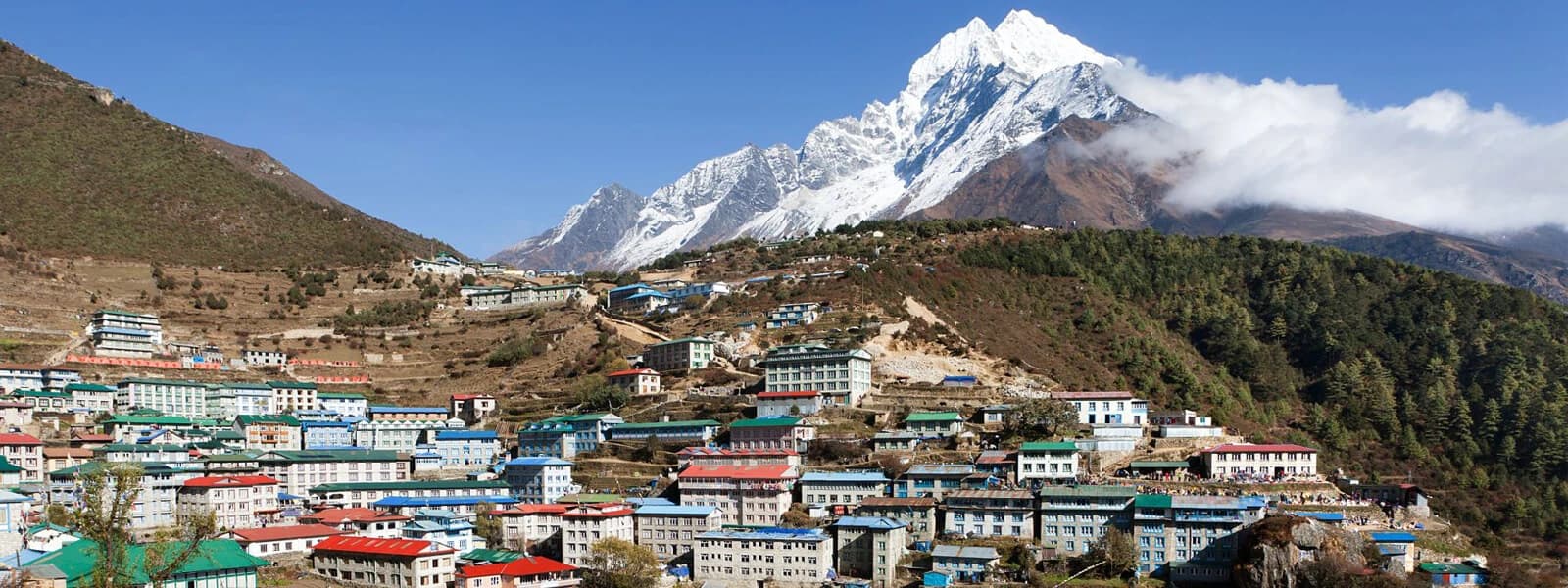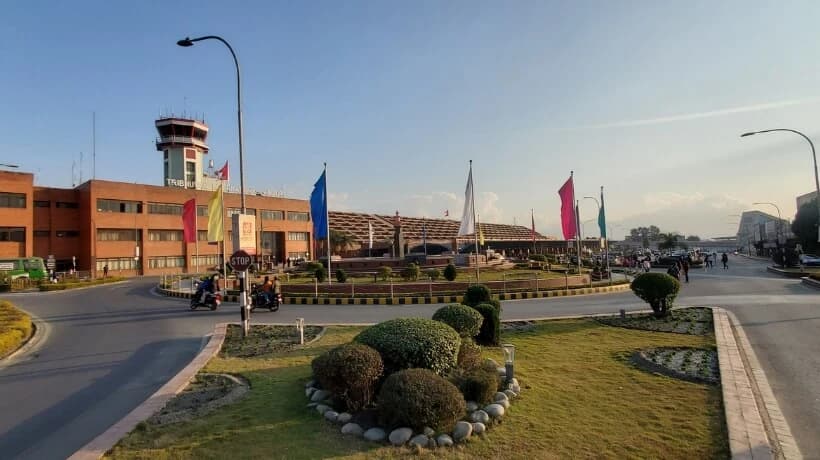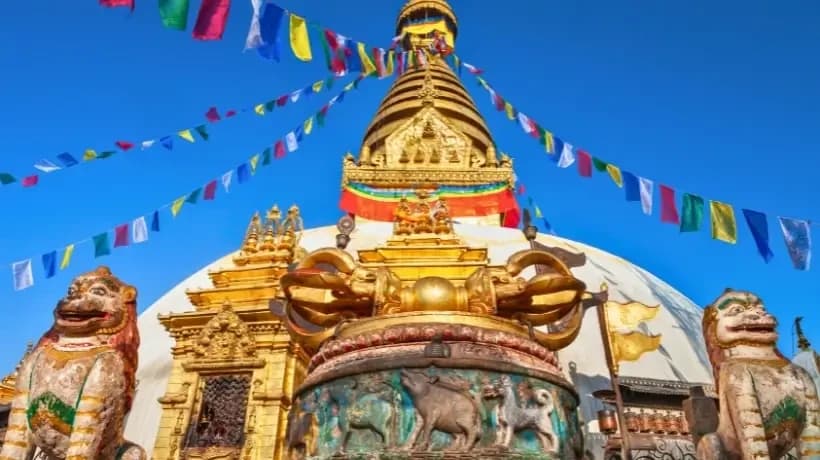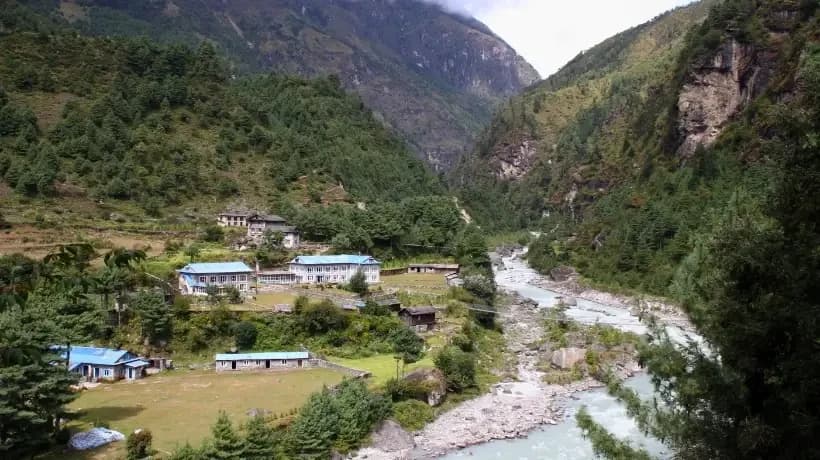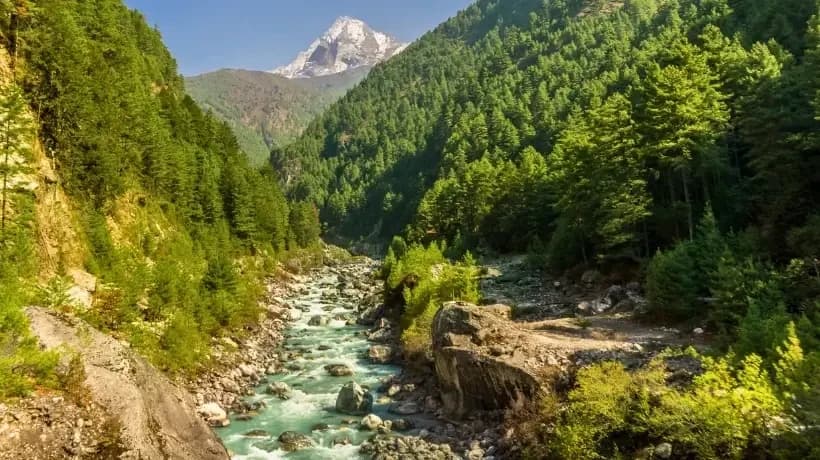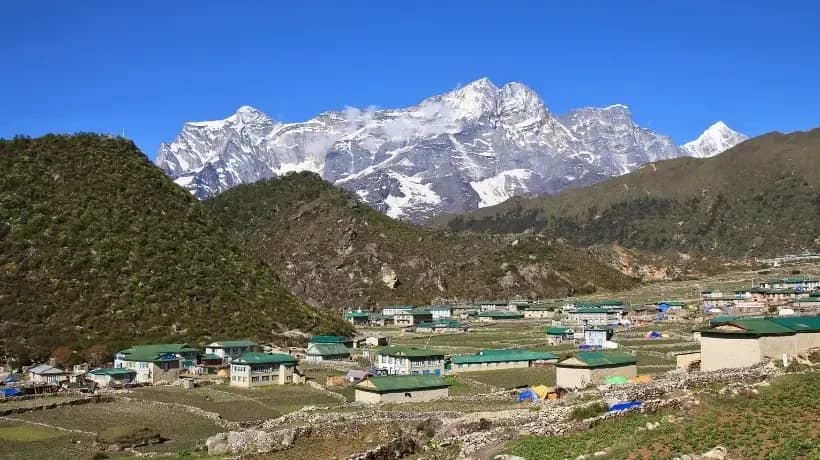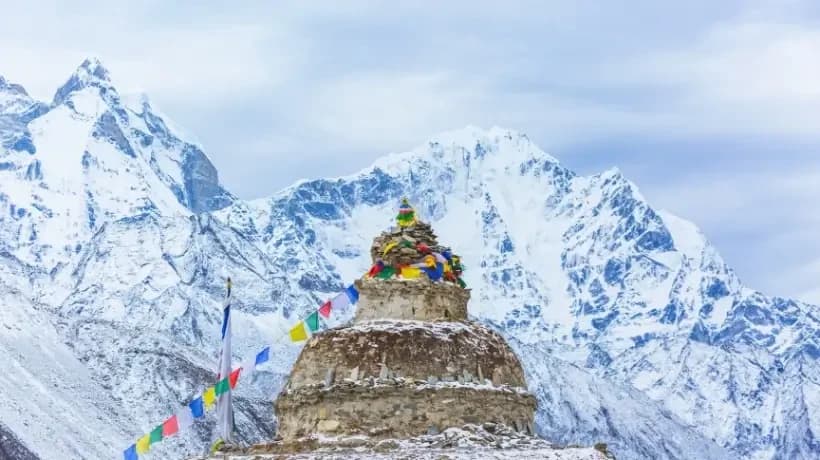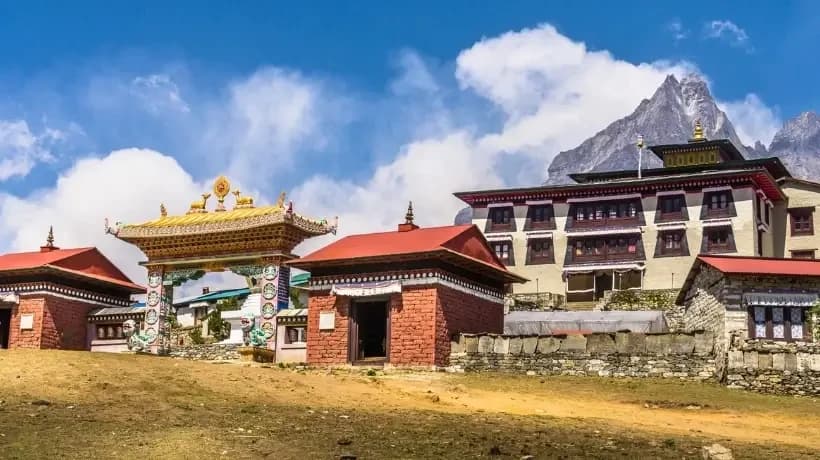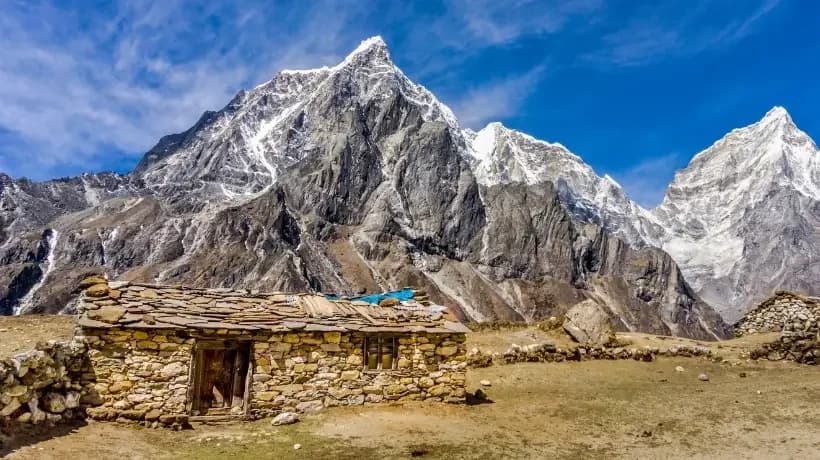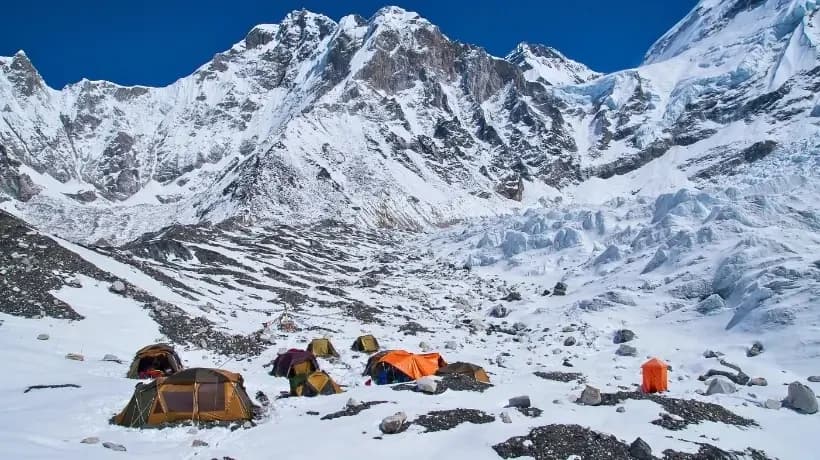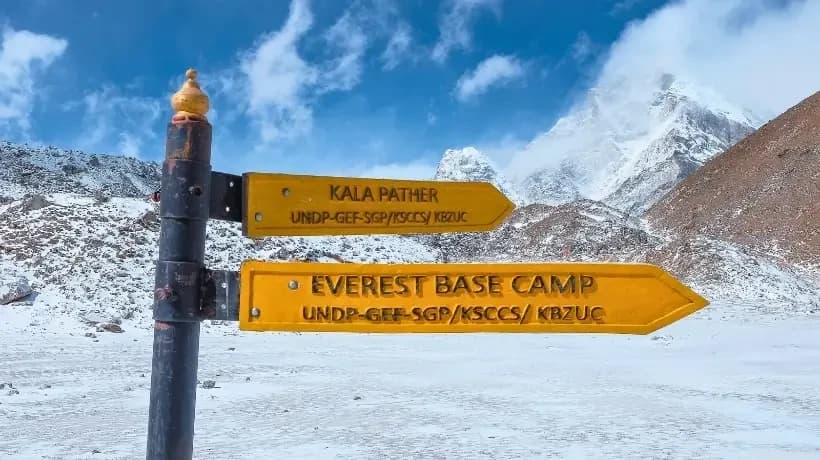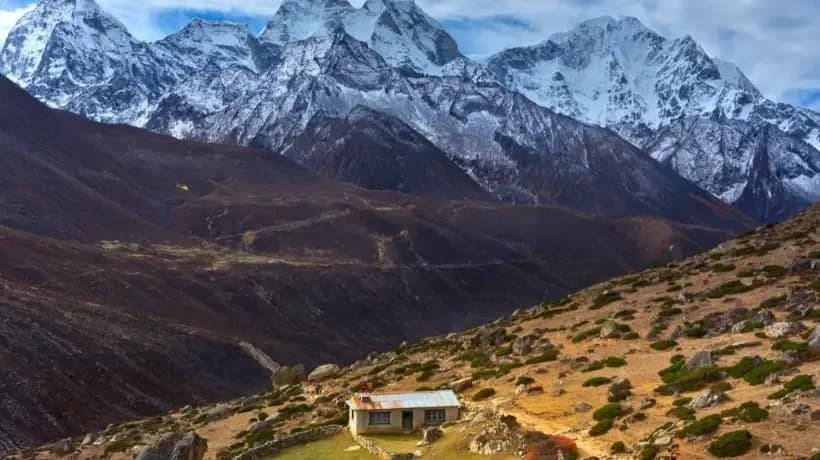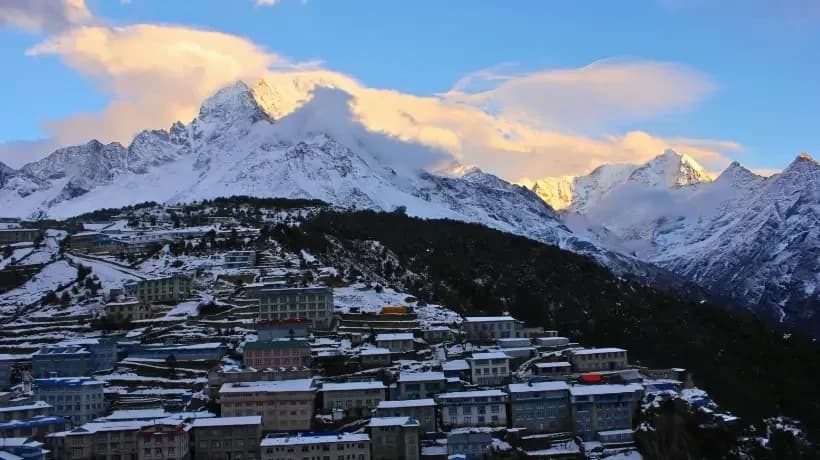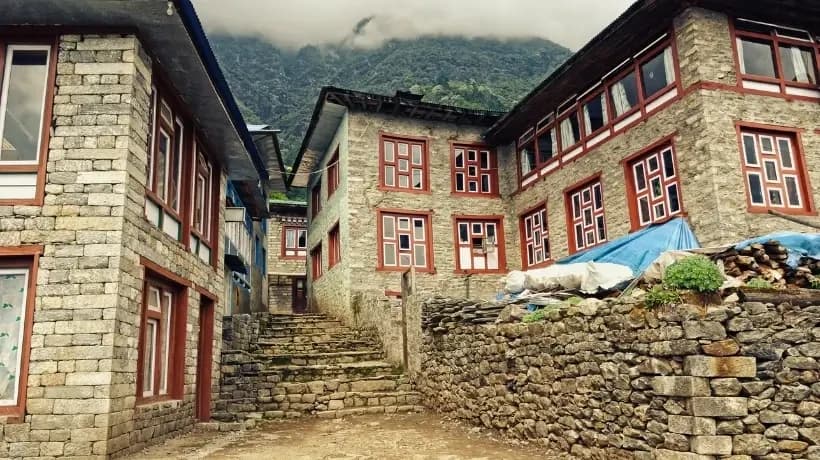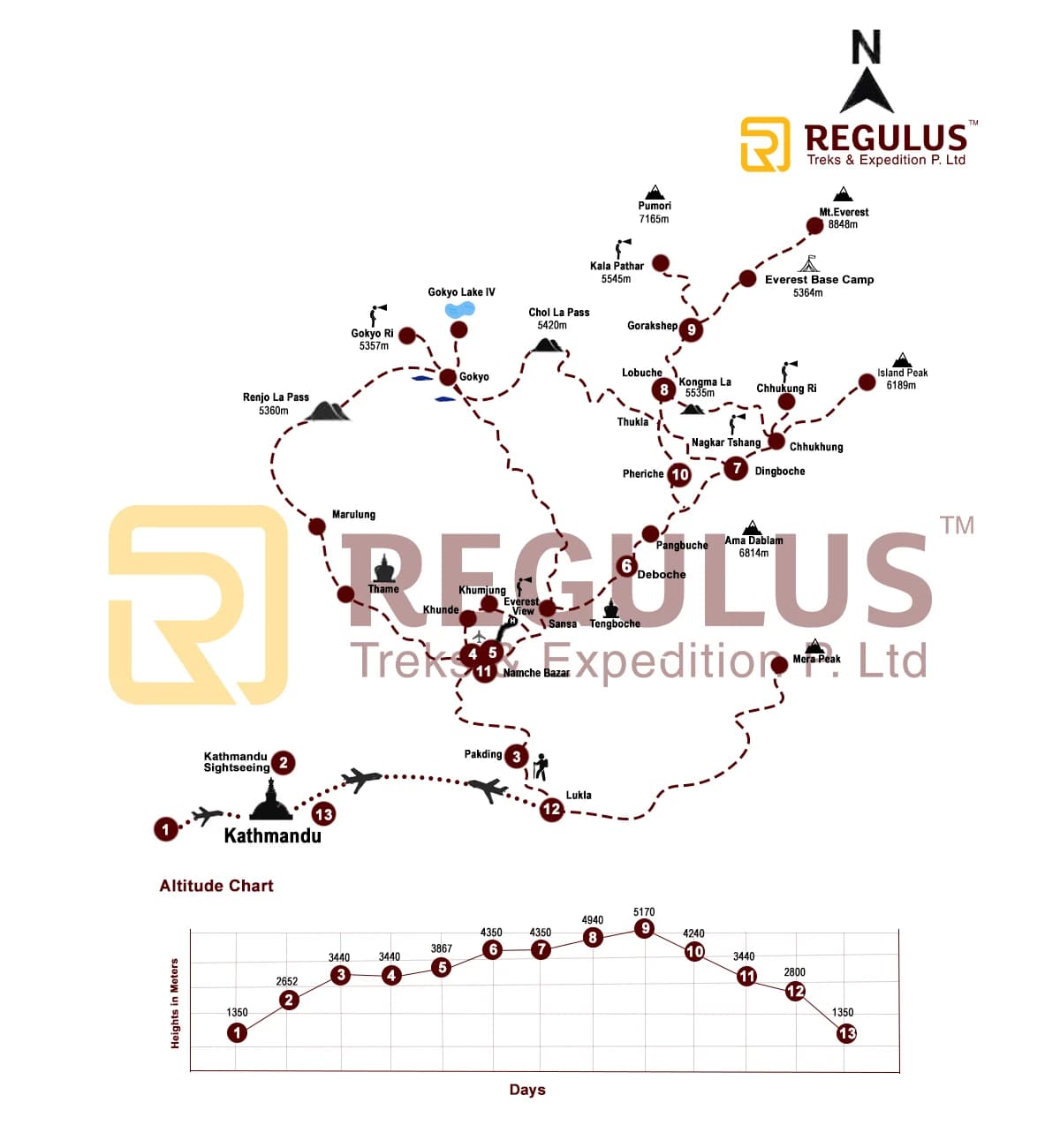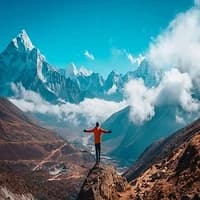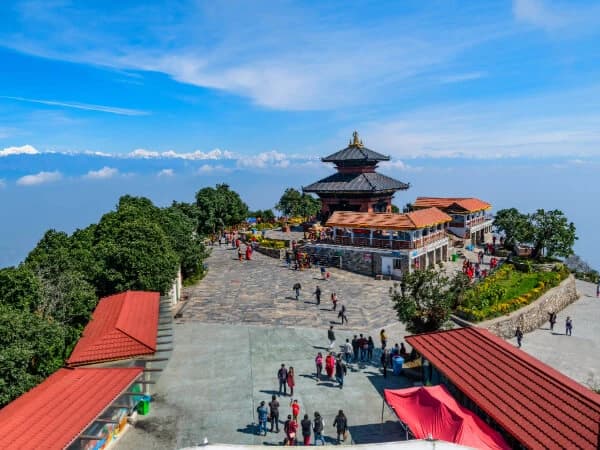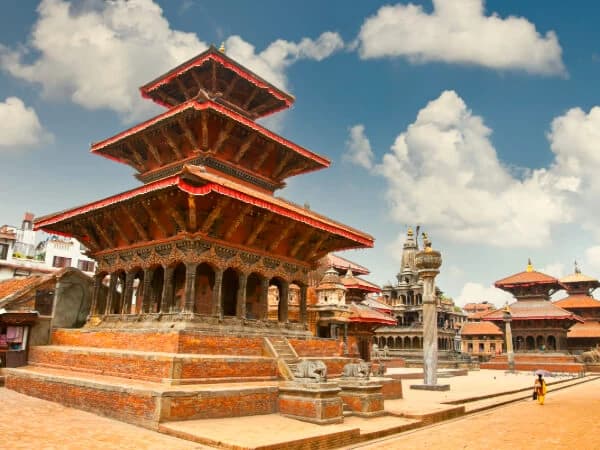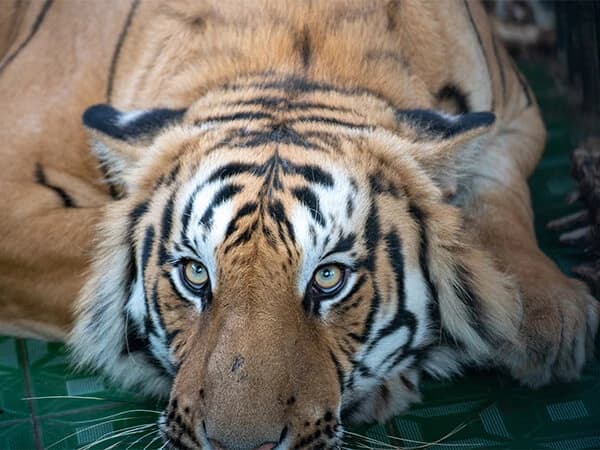The Everest Base Camp trek is an extraordinary voyage for extraordinary humans. A journey that pushes you to touch great heights and be one with nature!
On the 14-day Everest Base Camp trek, travelers explore the eastern Himalayas of Nepal, which is home to some of the tallest mountains in the world. Also known as the EBC trek, you will begin the trip from Kathmandu and fly to Lukla. As one of the bucket list items for adventurers worldwide, the Everest Base Camp trekking is a life-changing expedition.
Mount Everest is the tallest mountain on Earth and has two base camps in the southern and northern directions. The southern Everest Base Camp is in Nepal and is famous among avid trekkers for its adventurous trail via lush forests and Sherpa villages. Likewise, the northern Everest Base Camp is in Tibet and involves a tricky permit system.
Our Everest Base Camp trek takes 14 days and takes you to the south base camp in Nepal. The trail goes up to Kala Patthar. During the trek, you will get to see close-up views of many Himalayan mountains like Everest (8,849 m/29,032 ft), Lhotse (8,516 m/27,940 ft), Cho Oyu (8,188 m/26,864 ft), Makalu (8,463 m/27,766 ft), Kanchenjunga (8,586 m/28,169 ft), Ama Dablam (6,812 m/22,349 ft), etc.
Highlights
- Take a thrilling, short flight in and out of Lukla
- Witness some of the tallest mountains in the world, including Everest, Kanchenjunga, Lhotse, Makalu, and Cho Oyu
- Trek to the base camp of Mount Everest and hike to Kala Patthar as your final ascent
- Get to see mesmerizing views of the Khumbu Glacier and Khumbu Icefall
- Follow an adventurous trail via dense forests and picturesque Sherpa villages in the Sagarmatha National Park
- Cross across diverse flora and fauna, different climatic zones, waterfalls, rivers, streams, and glaciers
- Visit ancient monasteries like Tengboche and Pangboche on the way
- Experience the simple mountain lifestyle and nourishing meals
- Get to know the Sherpas closely and their daily life, culture, and beliefs
What to expect while trekking to the Everest Base Camp trek?
You will be trekking in the Khumbu region during the Everest Base Camp trek. The trail is within the Sagarmatha National Park. The trek is delightful as you walk via beautiful rhododendron forests, crossing lovely suspension bridges over rivers. However, it is not easy. High altitude and varying terrain with long walking hours challenge the trekkers.
From Lukla to Everest Base Camp, you will spend multiple nights in different Sherpa villages such as Phakding, Namche Bazaar, Deboche, Dingboche, and Lobuche. While spending nights in these villages, you will get a glimpse of the daily lives of the locals and their values. You will also explore ancient monasteries like Tengboche and Pangboche.
The spring and autumn seasons bring trekkers from all around the world to the Everest Base Camp trail. The environment is cheerful and motivating. You may make lifetime friendships. Our Everest Base Camp trek 2024 bookings are open. Grab this opportunity and book your seat now. We are also welcoming trekkers who want to customize the itinerary.
Is this trek suitable for you? How to prepare for the Everest Base Camp trek?
You do not have to be an active trekker or super athlete to do the Everest Base Camp trek. Both beginner and experienced trekkers can do this trek if well prepared. The Everest Base Camp trek involves 5 to 6 hours of daily walking in an ever-changing Himalayan environment. So, the trekkers have to be in good shape.
We recommend training before joining the Everest Base Camp trek. You can do 3 to 4 weeks of regular walking, day hiking, and exercise. Improve your stamina, endurance, and strength. From aerobic exercise like swimming, running, cycling, etc, to strength training in the gym, make a diverse routine.
Everest Base Camp trek general packing guide
While trekking to Everest Base Camp, you have to deal with the diverse Himalayan environment. Sturdy trekking boots, trekking poles for stability, sleeping bags, appropriate trekking clothes and outerwear, and other basic essentials are needed. You can check a comprehensive Everest Base Camp trek packing list here.
Why 14-day Everest Base Camp trek itinerary? Route choices for the EBC trek
Our 14-day Everest Base Camp trek itinerary is perfect, with an acclimatization day in Namche Bazaar and daily ascents under 500 meters. This EBC itinerary lowers the risk of altitude sickness during the trek and also provides you ample time to enjoy your surroundings.
If you are a bit short on time, you can opt for our Everest Base Camp trek with helicopter return. This package eliminates the return trekking from Gorak Shep, saving you almost 3–4 days. Likewise, travelers who are bound by time or health can do the Everest Base Camp helicopter tour with landing. It is a 4-hour day program.
We also have a luxury Everest Base Camp trek package, which is curated to offer a bespoke, comfortable experience. And for trekkers looking to go beyond EBC can check out our Everest Three High Passes trek and Gokyo Lake trek. All of these are different Everest Base Camp trek packages for trekkers with different requirements.
Everest Base Camp trek cost (discount for a big group)
Our Everest Base Camp trek cost starts at USD 1,600 per person for a standard 14-day package. The cost of the package will change as per the itinerary and services included in the package. For instance, the luxury Everest Base Camp trek costs USD 2,800 per person (without helicopter return).
| Package | Participants | Cost | Booking |
| EBC Trek | 1 | USD $ 1990 per person | Book Here |
| EBC Trek | 2-4 | USD $ 1900 per person | Book Here |
Come explore the Everest Base Camp trail with us in Nepal—a customizable trek booking for 2024 and 2025
We, Regulus Treks & Expedition, are offering the best Everest Base Camp trek 14-day package in Nepal. Our well-designed and tested itinerary increases your chance of reaching the summit of Mount Everest. Likewise, our trained and experienced Everest Base Camp trek guide helps you throughout the journey and ensures your safety.
Our top-notch service, additional perks, and attention to detail make the Everest Base Camp trekking hassle-free for the trekkers. As a very old local Nepali trekking company, we have extensive knowledge of the Himalayan routes and a vast network. Trekking with us means you will greatly support the local mountain communities and practice eco-friendly tourism.


